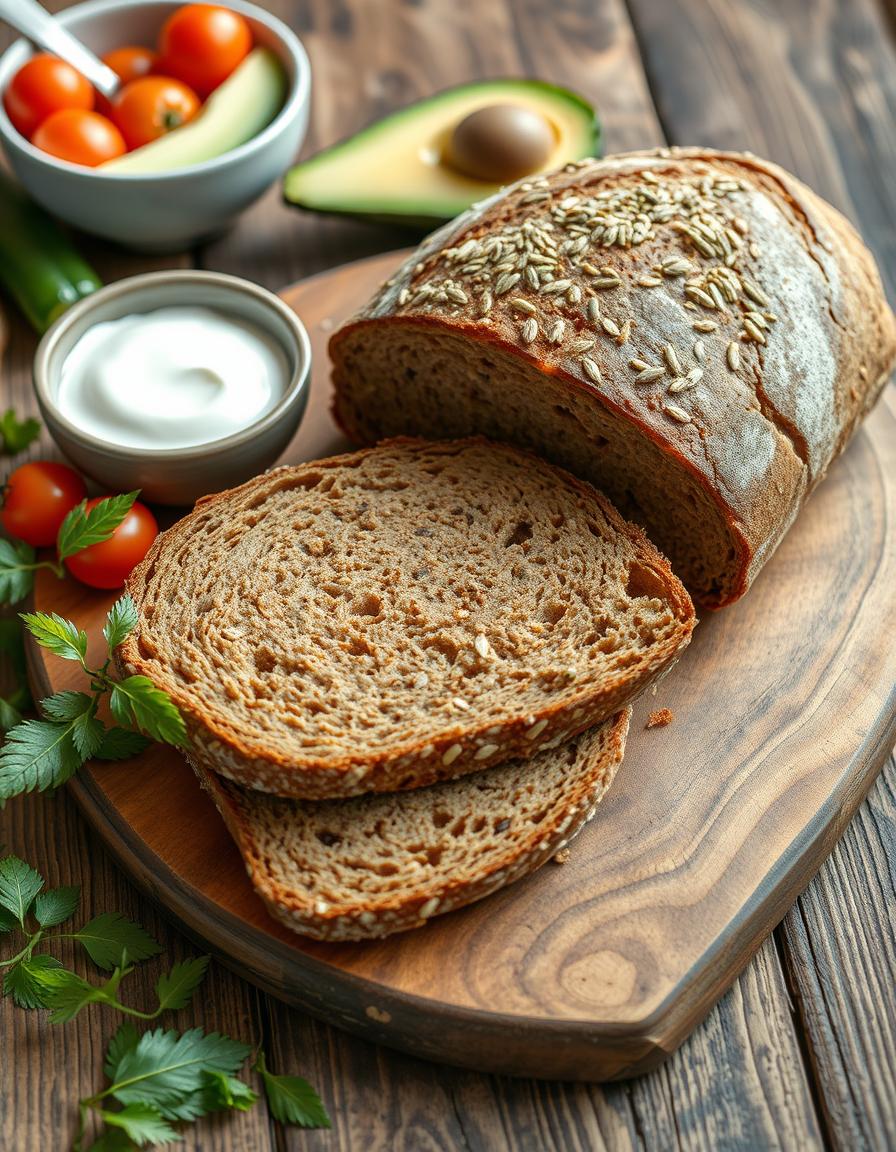Bread is a staple food for many people around the globe, but not all breads are created equal. The rye bread nutrition facts with its distinct flavor and darker color, has been gaining attention as a healthier alternative to the plain white loaf sitting on most supermarket shelves. To understand whether rye bread deserves a spot in your daily diet, it’s important to look closely at rye bread nutrition facts and compare them to white bread. Let’s take a friendly stroll through what makes rye bread unique and how it stacks up against the more common white bread.
What Is Rye Bread?
Rye bread is made primarily from rye flour, which comes from the rye grain. The bread itself is denser and usually darker than white bread, sometimes with a slightly sour taste. This difference in texture and taste comes from rye’s unique fiber content and baking process. Rye bread has been a traditional favorite in many Northern and Eastern European countries, where it’s loved for its hearty flavor and longer shelf life.
Breaking Down Rye Bread Nutrition Facts
Understanding the nutrition facts of rye bread helps you decide if it fits your lifestyle or dietary goals. Below is a typical nutritional profile for one slice (about 32 grams) of whole rye bread:
| Nutrient | Amount per Slice | % Daily Value* |
|---|---|---|
| Calories | 83 | 4% |
| Carbohydrates | 15 grams | 5% |
| Fiber | 2 grams | 8% |
| Protein | 2.5 grams | 5% |
| Fat | 0.7 grams | 1% |
| Sugar | 1 gram | — |
| Sodium | 230 mg | 10% |
*Percent Daily Values are based on a 2,000-calorie diet.
Why Does Rye Bread Have More Fiber?
Rye grains have a higher amount of soluble fiber compared to wheat. Fiber helps keep your digestive system happy, stabilizes blood sugar, and can even help you feel full longer. This means rye bread might keep those mid-afternoon snack cravings at bay better than white bread.
Rye Bread vs. White Bread: The Showdown
White bread is commonly made from refined wheat flour, which loses much of its fiber and nutrients during processing. Here’s a quick comparison of rye bread nutrition facts against white bread (one slice, about 25 grams):
| Nutrient | Rye Bread | White Bread |
|---|---|---|
| Calories | 83 | 66 |
| Carbohydrates | 15 g | 13 g |
| Fiber | 2 g | 0.6 g |
| Protein | 2.5 g | 2 g |
| Fat | 0.7 g | 0.7 g |
| Sodium | 230 mg | 130 mg |
You’ll notice rye bread packs in more fiber and protein, which are both helpful for energy and fullness. However, it also tends to have more sodium, which is something to monitor if salt intake is a concern for you.
Health Benefits of Rye Bread
- Better digestion: The fiber in rye bread supports gut health and can ease constipation.
- Blood sugar control: Rye’s fiber slows down the absorption of sugars, helping to maintain steady blood sugar levels.
- Feeling full longer: Thanks to its fiber and denser texture, rye bread can help curb overeating.
- Rich in nutrients: Rye contains vitamins like B-complex and minerals such as magnesium, which are important for energy and muscle function.
Are There Any Drawbacks to Rye Bread?
Though rye bread has some perks, it might not be perfect for everyone. For example, people with gluten sensitivities should be cautious because rye contains gluten, just like wheat. Also, the slightly higher sodium content could be an issue if you’re watching your salt intake. Another thing is that rye’s strong flavor and heavier texture might not be everyone’s cup of tea, especially if you prefer light and fluffy white bread.
Additionally, if you enjoy an active lifestyle or regular bootcamp workouts, having a balanced intake of carbs to fuel your energy is essential. Rye bread’s slower digestion may help sustain energy longer, but make sure it fits your specific carb needs.
How to Choose the Right Rye Bread
Not all rye breads are created equal. Some are made with a mix of wheat and rye flour, while others are 100% rye. The darker, denser breads usually have more whole grain rye and therefore more nutrients and fiber. When shopping, check the ingredient list to ensure the first flour listed is rye or whole rye flour. Avoid breads loaded with excessive sugar or preservatives.
Here are some tips for picking a healthy rye bread:
- Look for whole grain rye flour as the first ingredient.
- Check fiber content – aim for at least 2 grams per slice.
- Avoid added sugars or artificial ingredients.
- Choose breads with minimal additives.
Simple Ways to Enjoy Rye Bread
Rye bread’s unique flavor pairs wonderfully with a variety of toppings. Smear on some avocado and sprinkle seeds, add lean turkey and mustard, or go classic with cream cheese and smoked salmon. Some love it toasted with a bit of butter and honey for a cozy snack. The denser texture means it holds up well under heavier toppings without getting soggy.
Summary Table: Rye Bread vs. White Bread Pros and Cons
| Aspect | Rye Bread | White Bread |
|---|---|---|
| Fiber | Higher – good for digestion and fullness | Lower |
| Flavor | Strong, hearty, slightly sour | Mild, soft, neutral |
| Texture | Dense, chewy | Light, fluffy |
| Sodium | Moderate to high | Lower |
| Gluten Content | Contains gluten | Contains gluten |
| Shelf Life | Longer due to denser crumb | Shorter |
Conclusion
Rye bread nutrition facts show that it offers more fiber and protein than white bread, which could help keep you fuller for longer and support better digestive health. Its unique taste and denser texture might not be a crowd-pleaser for everyone, but those who enjoy it can gain some nice nutritional advantages. While it contains more sodium and gluten, the benefits often outweigh those downsides for many people.
Ultimately, choosing between rye and white bread depends on your personal taste preferences, dietary needs, and lifestyle. If you want to add a slice of something healthy and hearty to your meals, rye bread is certainly worth a shot. And if you’re into staying active, pairing it with balanced meals and maybe some fun bootcamp workouts can help you feel your best every day.

I’m Sandy – sharing simple tips, plans, and motivation to help you stay in a calorie deficit Plan and reach your fitness goals.

